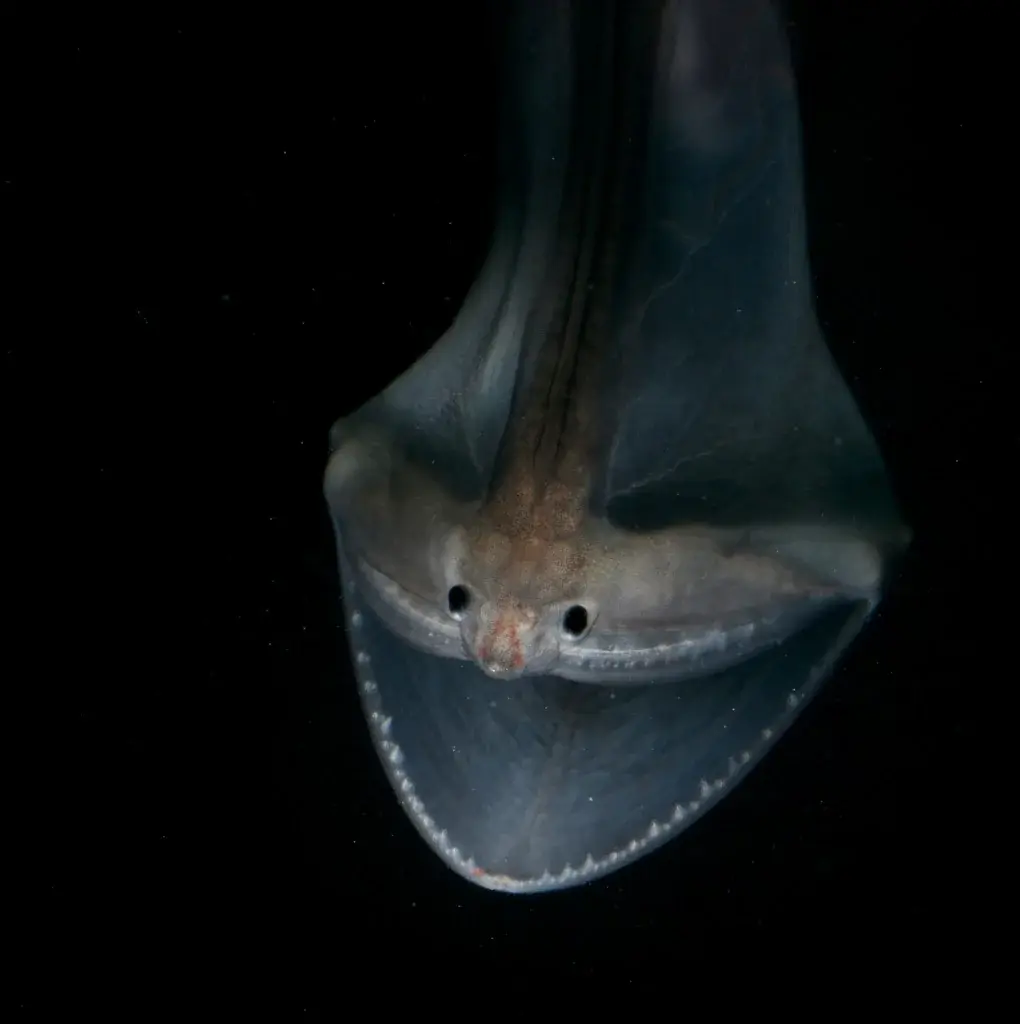The pelican eel (Eurypharynx pelecanoides) is a deep-sea eel. It is the only known member of the genus Eurypharynx and the family Eurypharyngidae. It belongs to the "saccopharyngiforms", members of which were historically placed in their own order, but are now considered true eels in the order Anguilliformes. The pelican eel has been described by many synonyms, yet nobody has been able to demonstrate that more than one species of pelican eel exists. It is also referred to as the gulper eel (which can also refer to members of the related genus Saccopharynx), pelican gulper, and umbrella-mouth gulper. The specific epithet pelecanoides refers to the pelican, as the fish's large mouth is reminiscent of that of the pelican. The pelican eel has been found in the temperate and tropical areas of all oceans. In the North Atlantic, it seems to have a range in depth from 500 to 3,000 m (1,600 to 9,800 ft). Recent studies have shown that pelican eels are active participants in their pursuit of food, rather than passively waiting for prey to fall into their large mouths. They are hypothesized to exhibit lunge-feeding through the expansion of their mandible and upper jaw. Adults feed mainly on crustaceans, but also take fishes, cephalopods, and other invertebrates. Pelican eels themselves are preyed upon by lancetfish and other deep sea predators. The pelican eel is not known to undergo vertical diurnal migration like other eels. Not much is known about the reproductive habits of the pelican eel. Similar to other eels, when pelican eels are first born, they start in the leptocephalus stage, meaning that they are extremely thin and transparent. Until they reach their juvenile stage, they interestingly have very small body organs and do not contain any red blood cells. As they mature, the males undergo a change that causes enlargement of the olfactory organs, responsible for the sense of smell, and degeneration of the teeth and jaws. The males also have defined reproductive organs. In a studied male, the testes occupied a majority of the space in the stomach cavity where the stomach had seemed to have shrunk. The females, on the other hand, remain relatively unchanged as they mature. The large olfactory organs in the sexually-mature males indicates that they may locate their mates through pheromones released by the females. Many researchers believe that the eels die shortly after reproduction.
